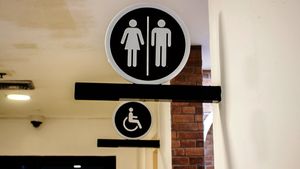As a warming climate makes summer heat waves more and more brutal, the risk of wildfires increases.
Experts warn that these hazardous conditions, when combined, pose an urgent risk to public health that disproportionately affects vulnerable populations.
Heat waves alone lead to poor air quality, even without wildfire pollution. The University Corporation for Atmospheric Research explains how stagnant air occurring during heat waves increases ozone and particulate pollution, which leads to dangerous ozone levels in and around urban areas.
And according to a report by the American Lung Association (ALA), almost 36 percent of Americans live in places with dangerous levels of ozone or particle pollution.
When harmful particulate matter from wildfires is added to the mix, the combined risks of exposure are "beyond the sum of their individual effects," according to a study conducted by the University of Southern California. While particulate-only days and extreme heat-only days increased the risk of mortality by roughly 5 to 6 percent, co-exposure days increased the risk of cardiovascular and respiratory mortality by 21 percent.
By reducing the body's ability to flush out toxins, co-exposure may also increase the risk of cancer and other illnesses. The National Institute of Health (NIH) states that air pollution can cause a cancer-inducing condition called oxidative stress, and a study from the University of Florida suggests similar risks from hyperthermia and dehydration.
Data shows that people of color may be disproportionately affected. Black Americans had a higher risk of particulate matter exposure, along with higher incidents of cardiovascular mortality, according to a study published by the NIH.
Additionally, there are racial disparities in heat-related emergencies – the frequency of heat-related ER visits in California, for example, increased significantly more for Black, Hispanic, and Asian Americans than for white Americans, as reported by a study from the Wilderness and Environmental Medicine Journal.
With worsening climate conditions, the frequency of extreme heat events and wildfires will only increase, putting vulnerable neighborhoods at the most risk. The U.N.'s Emissions Gap Report anticipated a temperature rise of over 2 degrees Celsius by the end of the century, with emissions policies falling short of what is needed to prevent future summers of environmental disaster.


















































